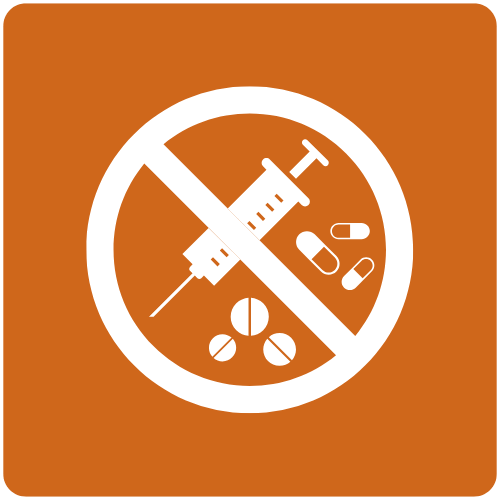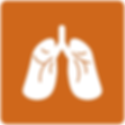
Mountain view community
The Mountain View Community includes Douglas, Howard, Howell and Shannon counties in Missouri.

PART 1: INTRODUCTION
Executive Summary
Since 2016, hospital systems, local public health agencies (LPHAs) and other healthcare partners in the greater Ozarks have worked together to release comprehensive Community Health Needs Assessments (CHNAs) every three years. This group, known as the Ozarks Health Commission (OHC), released community-level reports in 2016, 2019 and 2022. For the fourth iteration, the 2025 assessment has been compiled into community-level and regional snapshots, continuing the regional scope introduced in 2022.
Healthcare partners and LPHAs develop the results of these assessments into Community Health Improvement Plans (CHIPs). Organizations use CHIPs to target areas of health need and disparity in communities and create actionable plans to make them better over time.
The scope of the OHC region includes 33 counties across three states. These counties make up seven different communities, who each develop reports based on their community-level data. Information about data collection can be found in the OHC Regional Report.
The following is the 2025 Mountain View Community CHNA. This report aims to be a valuable resource for health care partners, civic organizations and people who live, work and seek health care in the Mountain View Community.

Service Area
The Mountain View Community includes Douglas, Howard, Howell and Shannon counties in Missouri. It encompasses the service area of Mercy St. Francis Hospital, Ozarks Healthcare, Douglas County Health Department, Howell County Health Department, Ozark County Health Department, Shannon County Health Center and Southern Missouri Community Health Center. Representing the Mountain View Community on the Ozarks Health Commission is Mercy Hospital St. Francis. The area includes state parks, rivers, rural communities, small townships and three cities, including Mountain View, West Plains and Ava.

Population overview
The Mountain View Community is home to 67,928 residents. From 2010-2020, the population declined by 7.39% which causes concerns including aging populations, job losses, declining tax revenues and shrinking schools and neighborhoods.
Of the Mountain View Community population, 82% is classified as rural and 18% classified as urban. In three of the four counties, all of the population lives in a rural area. Residents of the community mostly identify as White (93%). About 2% identify as Hispanic and 1% identify as Black or African American.
Of the total population in the Mountain View Community, 23% are under the age of 18, 55% are between the ages of 18-64, and 22% are age 65 or older. The population is, on average, older than both the OHC region and nation. Older residents are more likely to be living with chronic illnesses and require access to more health services.

Population by age
.png)
Rural vs. urban population
.png)
Populations of interest
Approximately 21% of the total population is living with a disability, which is higher than the state rate of 14% and the national rate of about 13%. This may contribute to access to care and disparities among community members with disabilities.


PART 2: Areas of focus

Mental health

Heart health

Cancer
Mental health
Mental health is an emerging issue in the Mountain View Community. It is a priority issue that is reflected among the entire OHC region.
Mental health conditions can develop in part due to feelings of loneliness.1 In a rural area like the Mountain View Community, loneliness is worsened by physical distance to neighbors and health care professionals, especially for seniors. 15% of seniors live alone in the community.
Generally, one in five people in the Mountain View Community have self-reported poor mental health. This is higher than the OHC region and the state.

Anxiety/Depression

Substance use

Suicide mortality
Mental health
Mental health is an emerging issue in the Mountain View Community. It is a priority issue that is reflected among the entire OHC region.
Mental health conditions can develop in part due to feelings of loneliness.¹ In a rural area like the Mountain View Community, loneliness is worsened by physical distance to neighbors and health care professionals, especially for seniors. 15% of seniors live alone in the community.
Generally, one in five people in the Mountain View Community have self-reported poor mental health. This is higher than the OHC region and the state.
Root causes

Anxiety / depression

Substance use

Suicide mortality
Anxiety / depression
The Mountain View Community shows higher rates of anxiety disorders (295.8 per 10,000) than the OHC region (764.7 per 10,000). While the Mountain View Community has lower rates of depressive disorders (212.3 per 10,000) than the OHC region (577.9 per 10,000), this may be due to lack of access to care in the primarily rural communities. For those who sought care, both anxiety and depressive disorders were most prevalent in residents over age 65, women, White individuals and those insured by Medicare.
In the Mountain View Community, 15% of seniors live alone and 1 in 5 people report having poor mental health.
Anxiety / depression
The Mountain View Community shows higher rates of anxiety disorders (295.8 per 10,000) than the OHC region (764.7 per 10,000). While the Mountain View Community has lower rates of depressive disorders (212.3 per 10,000) than the OHC region (577.9 per 10,000), this may be due to lack of access to care in the primarily rural communities. For those who sought care, both anxiety and depressive disorders were most prevalent in residents over age 65, women, White individuals and those insured by Medicare.
In the Mountain View Community, 15% of seniors live alone and 1 in 5 people report having poor mental health.

Substance use
Though drug use and reported alcohol use rates are lower in the Mountain View Community than in the OHC region, smoking remains an issue. 26% of adults 18+ are current smokers compared to nearly 22% of adults in the OHC region and 19% of adults in the state. Tobacco use disorder rates are highest among Mountain View Community residents aged 20-39 and residents who are insured by Medicare.
Suicide mortality
The Mountain View Community’s suicide mortality rate is greater than the OHC region and the state. Each year nearly 20 people die by suicide. Men in the Mountain View Community are 3 times more likely to die by suicide.

Heart health

Heart disease mortality

Physical activity

Nutrition
Heart disease mortality
Poor heart health is the leading cause of death for those living in the Mountain View Community. While these conditions are often associated with the elderly population, the effects can be felt much earlier. Often, root causes such as nutrition and physical activity result in poor heart health. Heart disease mortality in the Mountain View Community is higher than the OHC region and the state. Additionally, it has increased by 38% since 2015.
heart disease mortality
.png)

Physical activity
Exercise is vital for overall health. Lack of physical activity or access to exercise opportunities can lead to negative health outcomes, including poor mental and heart health.² One in five residents report that they have not been physically active within the last 12 months. Additionally, two in five residents do not have access to exercise opportunities.
Nutrition
A healthy and balanced diet is another factor that affects heart health. In adults, eating healthy foods can help maintain a healthy weight and lower the risk of heart disease, type 2 diabetes and some cancers.³
The rate of food insecurity in the Mountain View Community sits higher than the OHC region and the state. Of concern, childhood food insecurity is also higher than the OHC region and the state. These rates are the worst of any of the seven communities in the OHC region.

Cancer
In the Mountain View Community, cancer is the second leading cause of death. The community has the highest rate of cancer mortality of all seven communities within the OHC region. When considering all cancers, around 200 people in the Mountain View Community lose their life each year to cancer.
Colon and rectum cancer rates are 41.3 per 100,000 adults. This number is higher than the OHC region at 39.2 per 100,000 adults. These high rates may be associated with lack of preventative screening. One in three people aged 50-75 do not receive adequate colorectal cancer screening.
Cervical cancer rates are 16.9 per 100,000 females. This number is higher than the OHC region (10 per 100,000) and more than double that state (8.2 per 100,000). It is also the highest rate across all seven communities within the OHC region. Similar to colorectal cancer, this higher rate may be associated with lack of preventative screening. Only 78% of women aged 21-65 have a recent pap smear as compared to 80% of women in the OHC region and 82% in the state.

Other areas of interest
In addition to areas of focus for the Mountain View Community, other topics have been identified as areas of interest. These are public health issues for this community but are not an area of focus for this assessment. They are included to provide a broad snapshot of other conditions that affect the Mountain View Community.

Respiratory illness

Access to care
Respiratory illness
Chronic lung conditions including chronic obstructive pulmonary disease (COPD) are incurable and cause mild to severe breathing difficulties. The conditions may co-occur with other chronic ailments and contribute to poor health outcomes. COPD is often, but not always, associated with a history of smoking or tobacco exposure. Mortality rates due to COPD are higher in the Mountain View Community (58 per 100,000) than both the OHC region (55 per 100,000) and the state (47 per 100,000).
Some communicable diseases are respiratory illnesses—such as influenza and pneumonia. Both influenza and pneumonia are especially dangerous for infants, young children, elderly people and people with pre-existing health conditions. Deaths due to pneumonia and influenza are slightly higher in the Mountain View Community than in the OHC region and the state.


Access to care
Each person’s health and healthcare path is different, but there are certain root causes that can contribute to poor health outcomes. Things like access to medical care, financial stability and stigma toward certain conditions can prevent a person from taking preventative actions for their health, seeking care or changing their lifestyle.
Portions of the Mountain View Community are classified as a primary care health professional shortage area (HPSA). Half of residents live in a HPSA. One in four resident adults have not had a routine medical checkup in the past year. Additionally, one in five residents aged 18 to 64 do not have health insurance. Health care services are concentrated in Howell County. This concentration of services is beneficial for access overall. However, it can lead to gaps in access for rural populations within their communities and an overwhelming demand within Howell County. This is also true for mental health care.

PART 3: Closing Remarks

Conclusion
While this overview of health in the Mountain View Community is not comprehensive, it gives an important glimpse into areas of concern reflected in both data and community feedback. The 2025 assessment will be used to inform public health and health care initiatives. These initiatives will be outlined in a forthcoming Community Health Improvement Plan.
Dissemination
The OHC regional report and all community-level reports are available to the public through various channels
Printed copies
Printed copies will be available by request through health care partners and LPHAs. Please refer to organization websites or contact an organization directly
Health services available
The Arc of the Ozarks
Burrell Behavioral Health
Douglas County Health Department
Howell County Health Department
Mercy St. Francis Hospital
Ozark County Health Department
Ozarks Healthcare
Shannon County Health Department
Southern Missouri Community Health Center

AckNowledgements
Thank you to Mountain View Community partners and residents for contributing to this assessment through your feedback. Your contributions provide rich context to the vast health care data compiled for this report.
Thank you to the OHC Steering Committee for your collaboration and resource sharing during every step of the CHNA process.
Thank you to the Mountain View Community representatives in the OHC Steering Committee for your contributions toward data collection and creation of the report.
Citations
¹ Murthy, Dr. Vivek H. “Our Epidemic of Loneliness and Isolation.” HHS.gov. Last modified 2023. https://www.hhs.gov/sites/default/files/surgeon-general-social-connection-advisory.pdf.
² “Benefits of Physical Activity.” Centers for Disease Control and Prevention. Last modified April 24, 2024. https://www.cdc.gov/physical-activity-basics/benefits/index.html.
³ “Benefits of Healthy Eating for Adults.” Centers for Disease Control and Prevention. Last modified February 14, 2024. https://www.cdc.gov/nutrition/php/resources/healthy-eating-benefits-for-adults.html.
